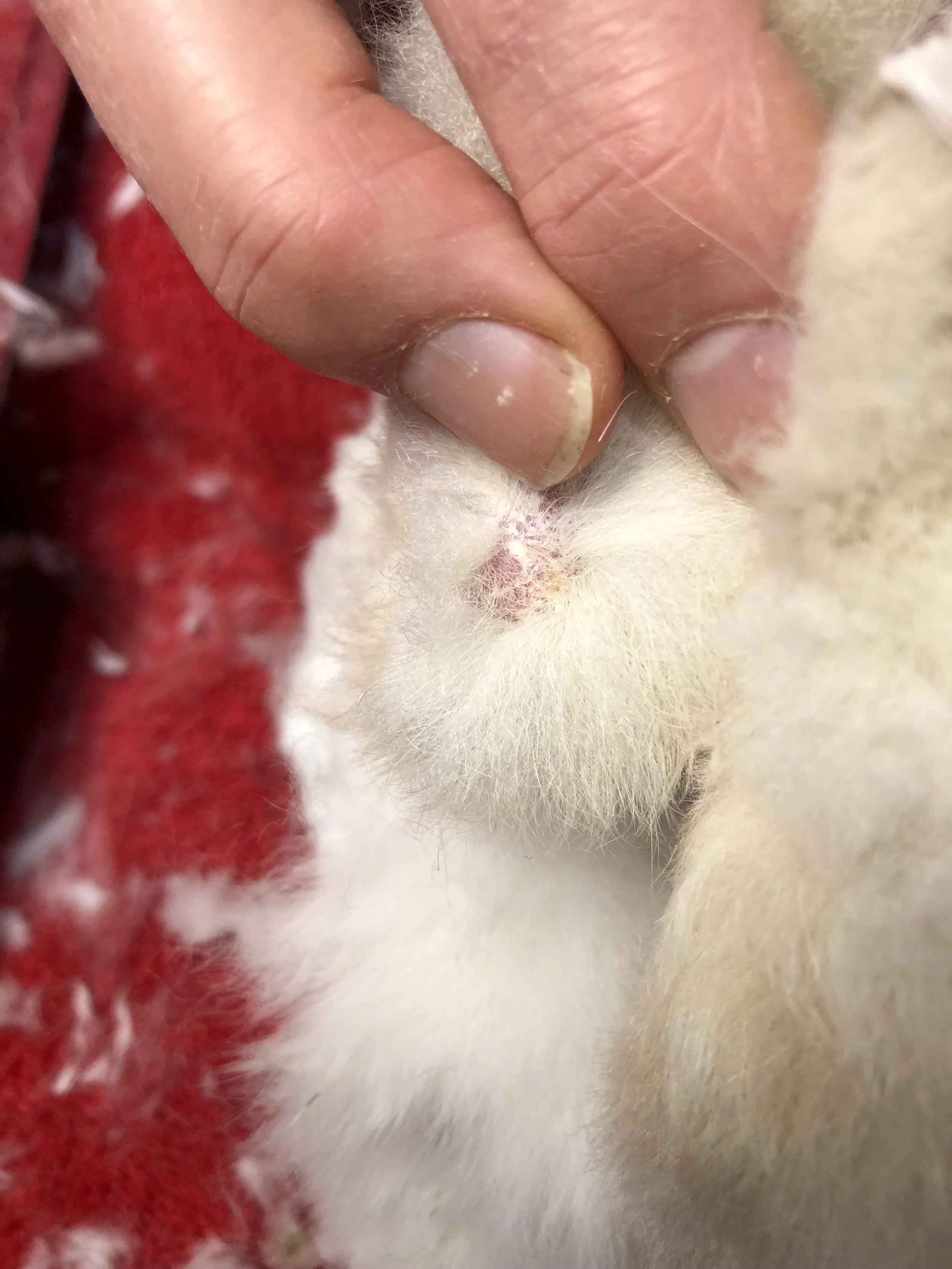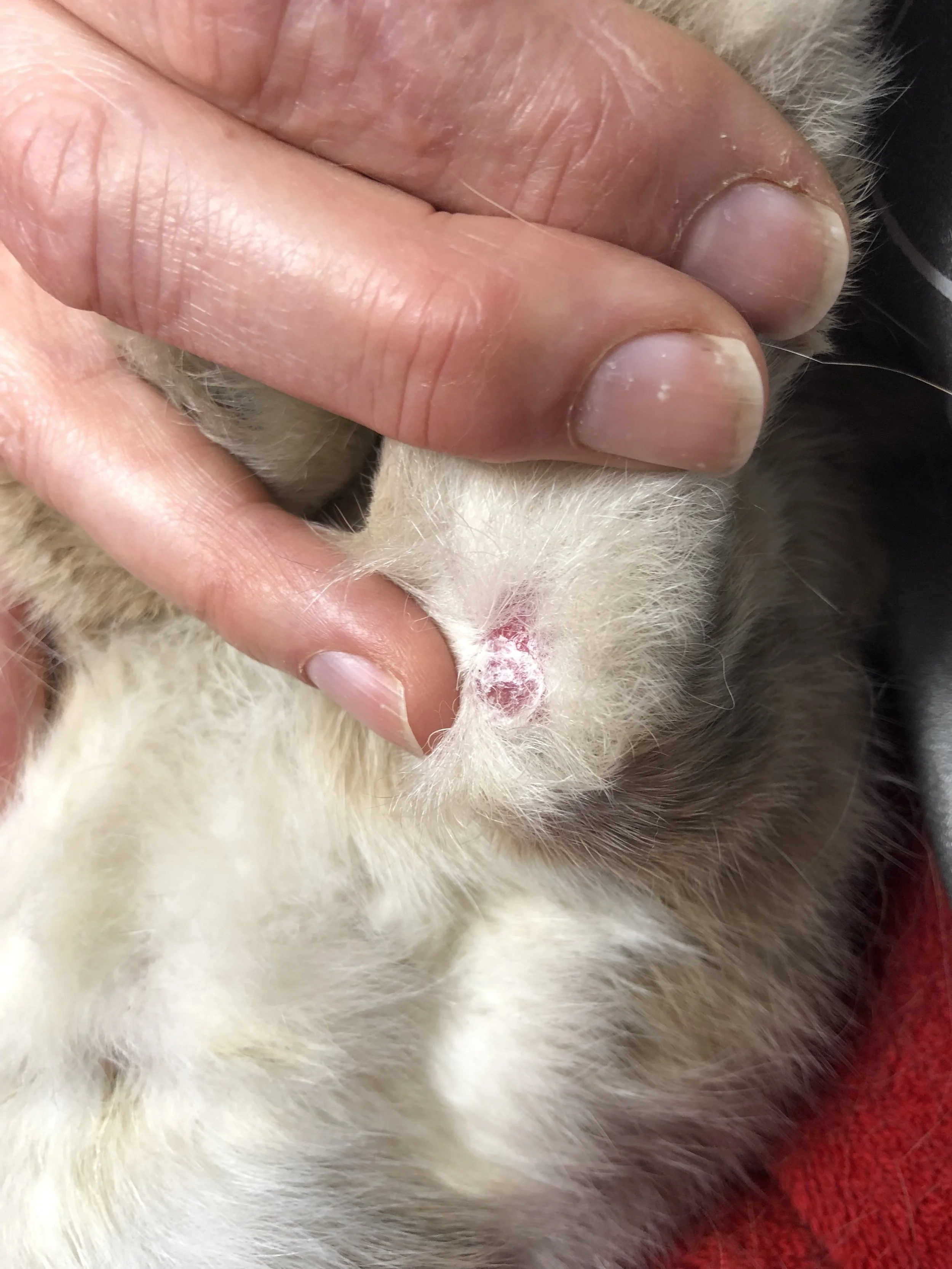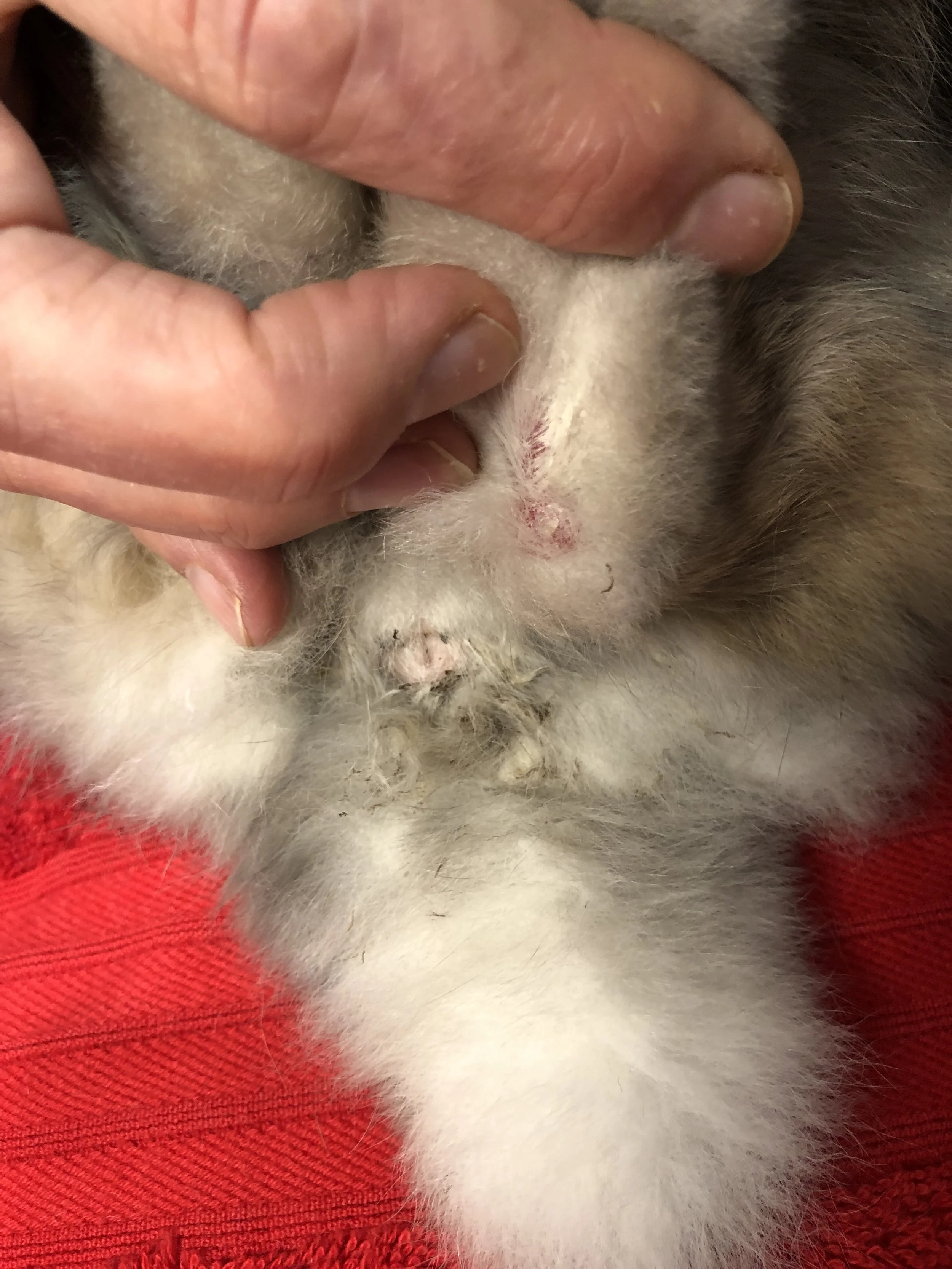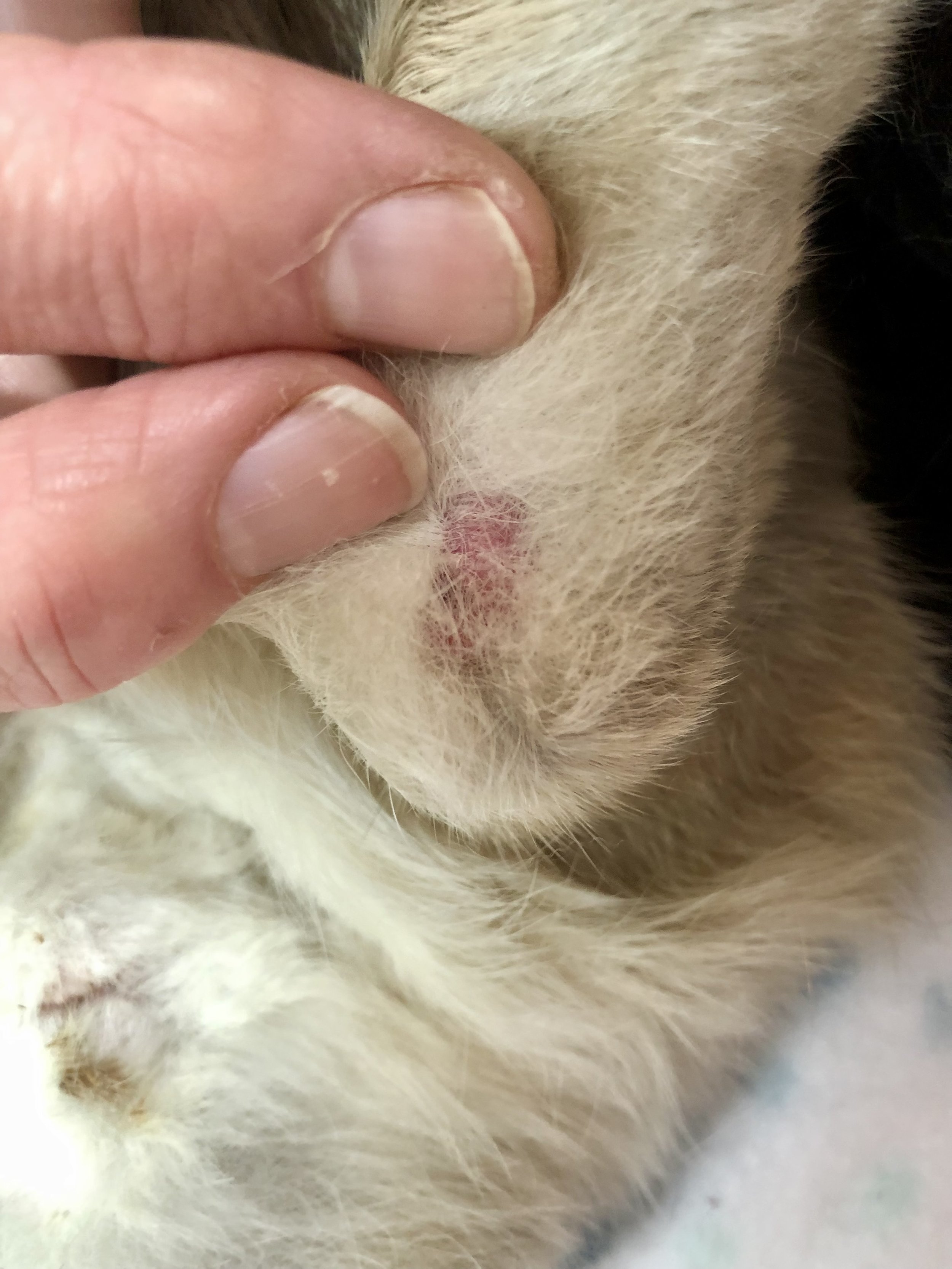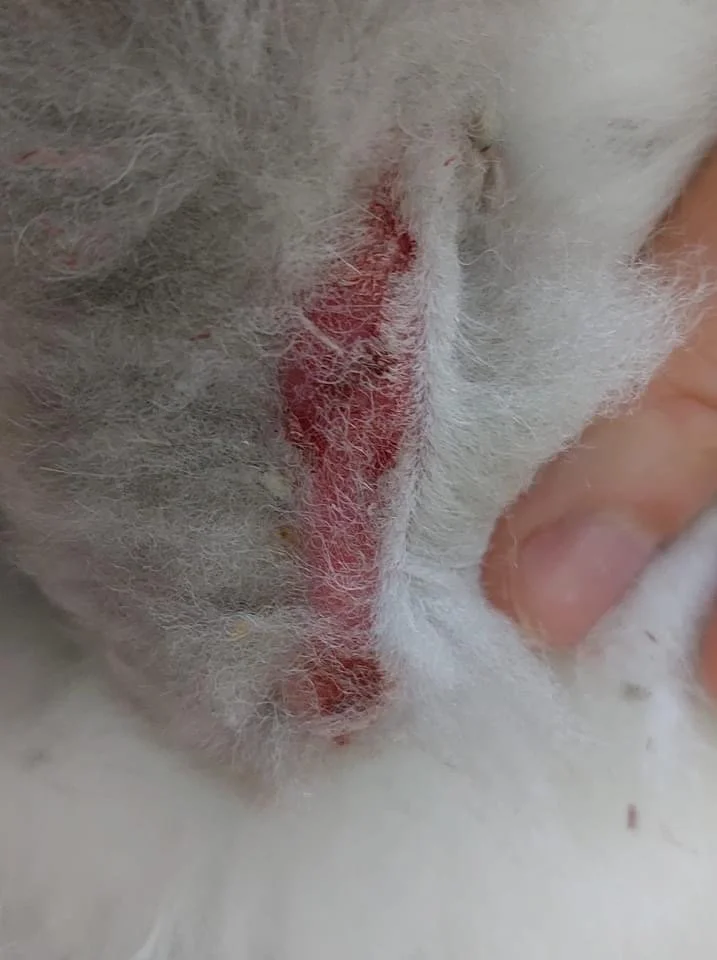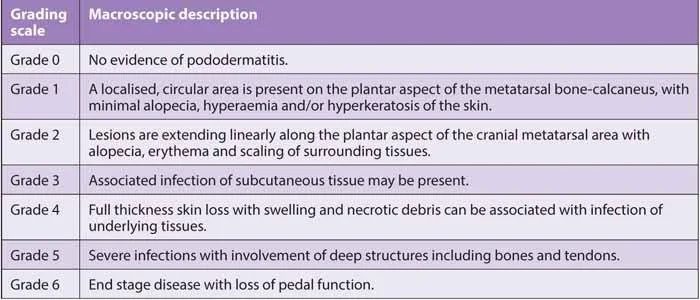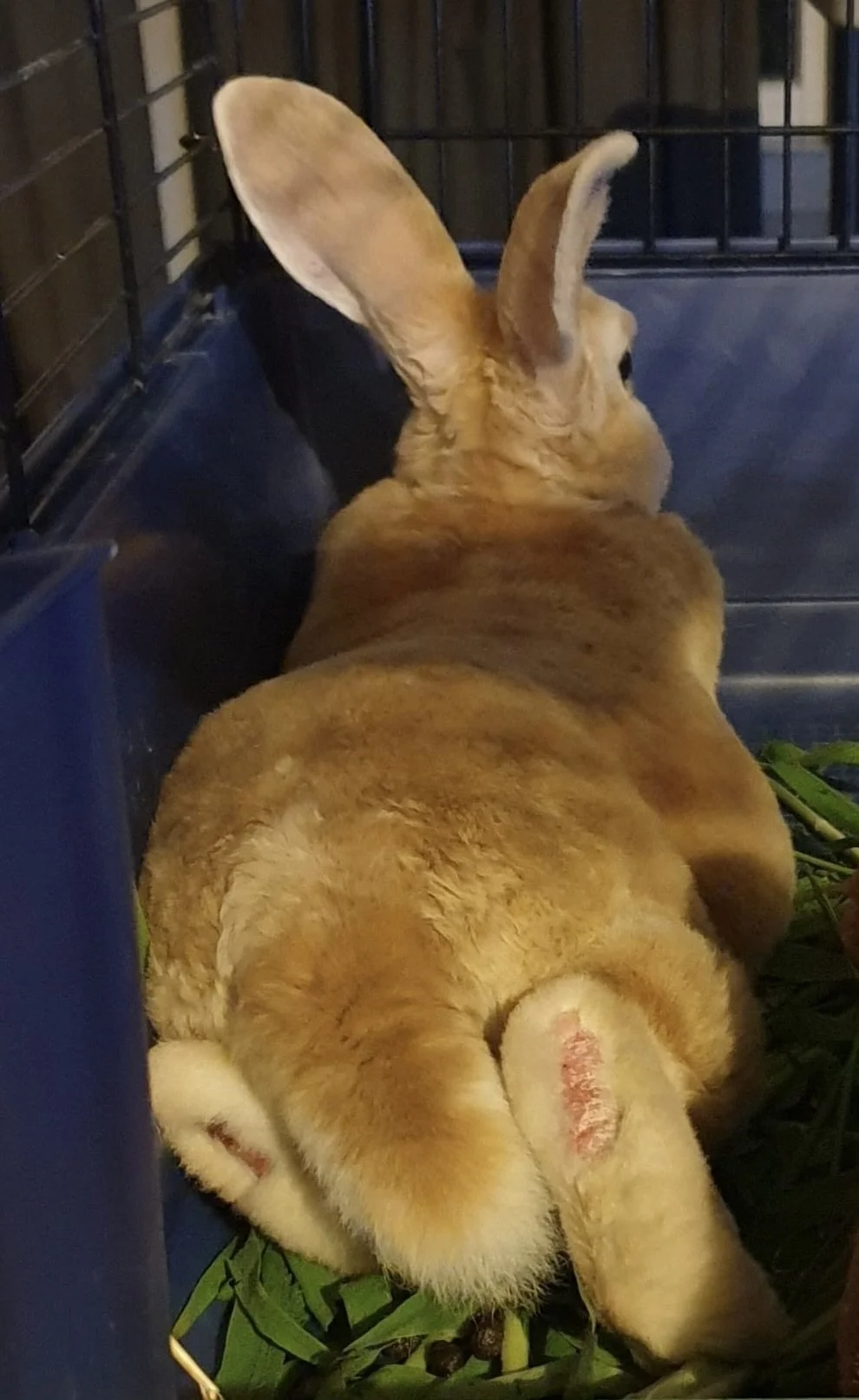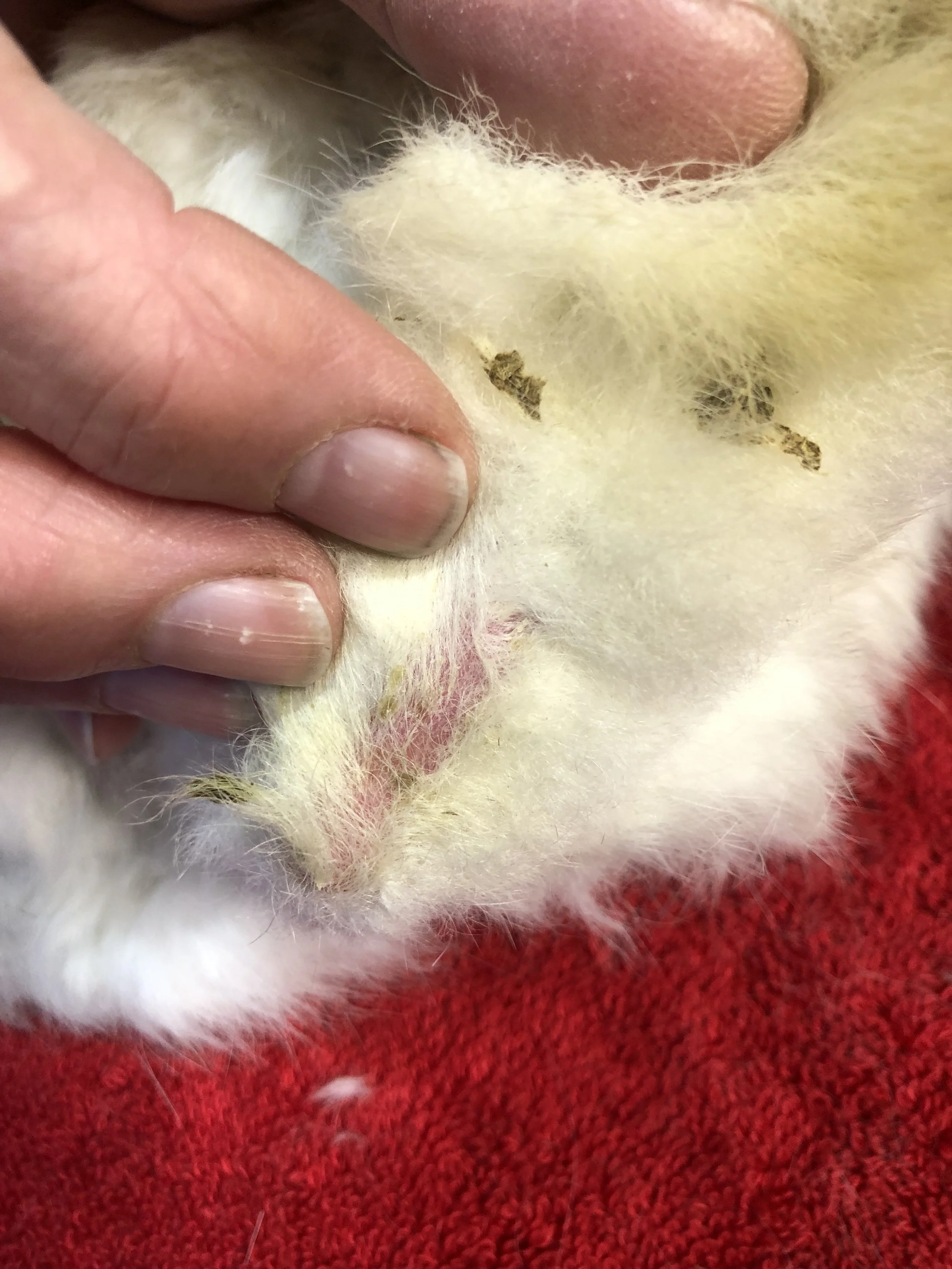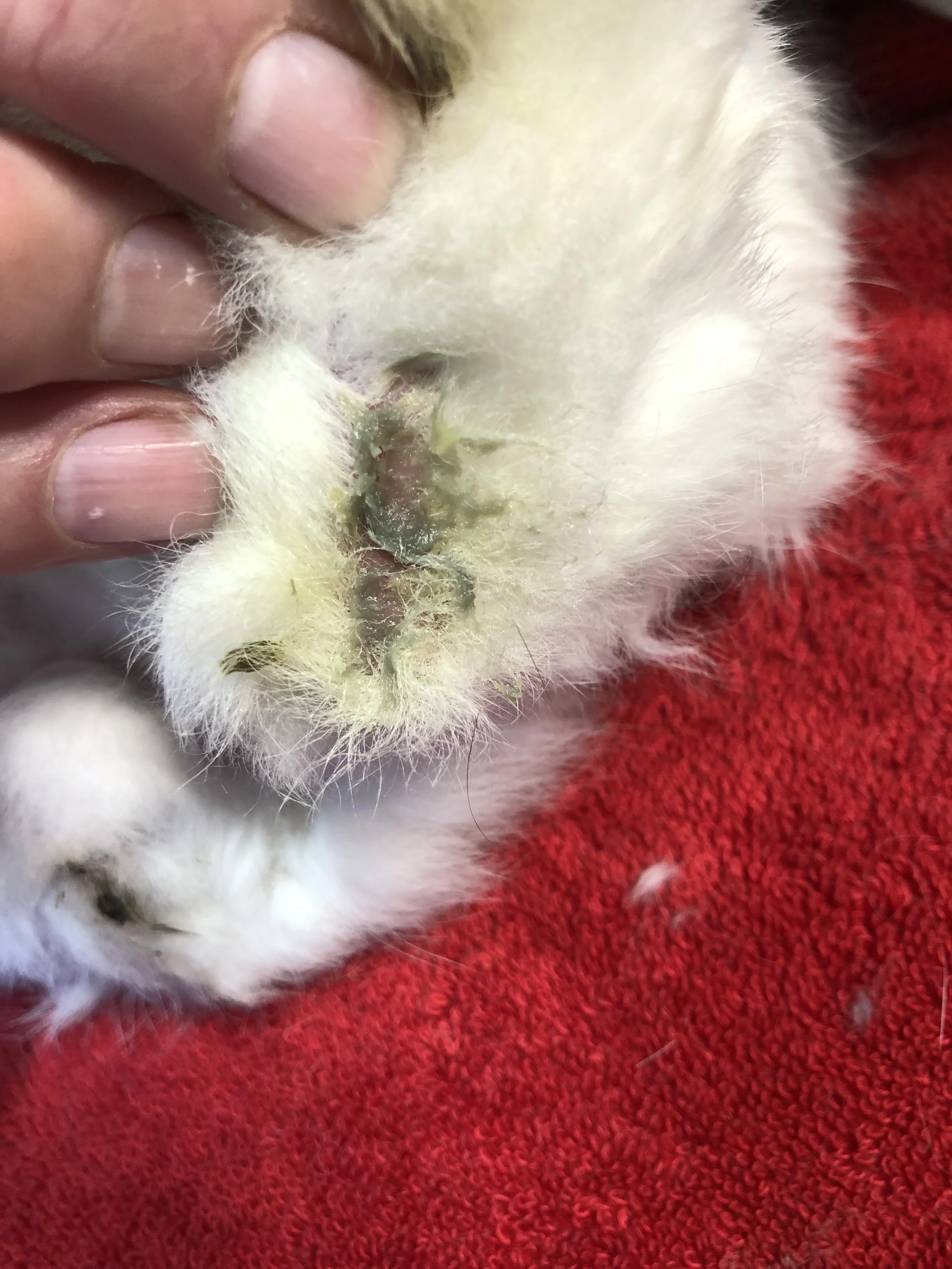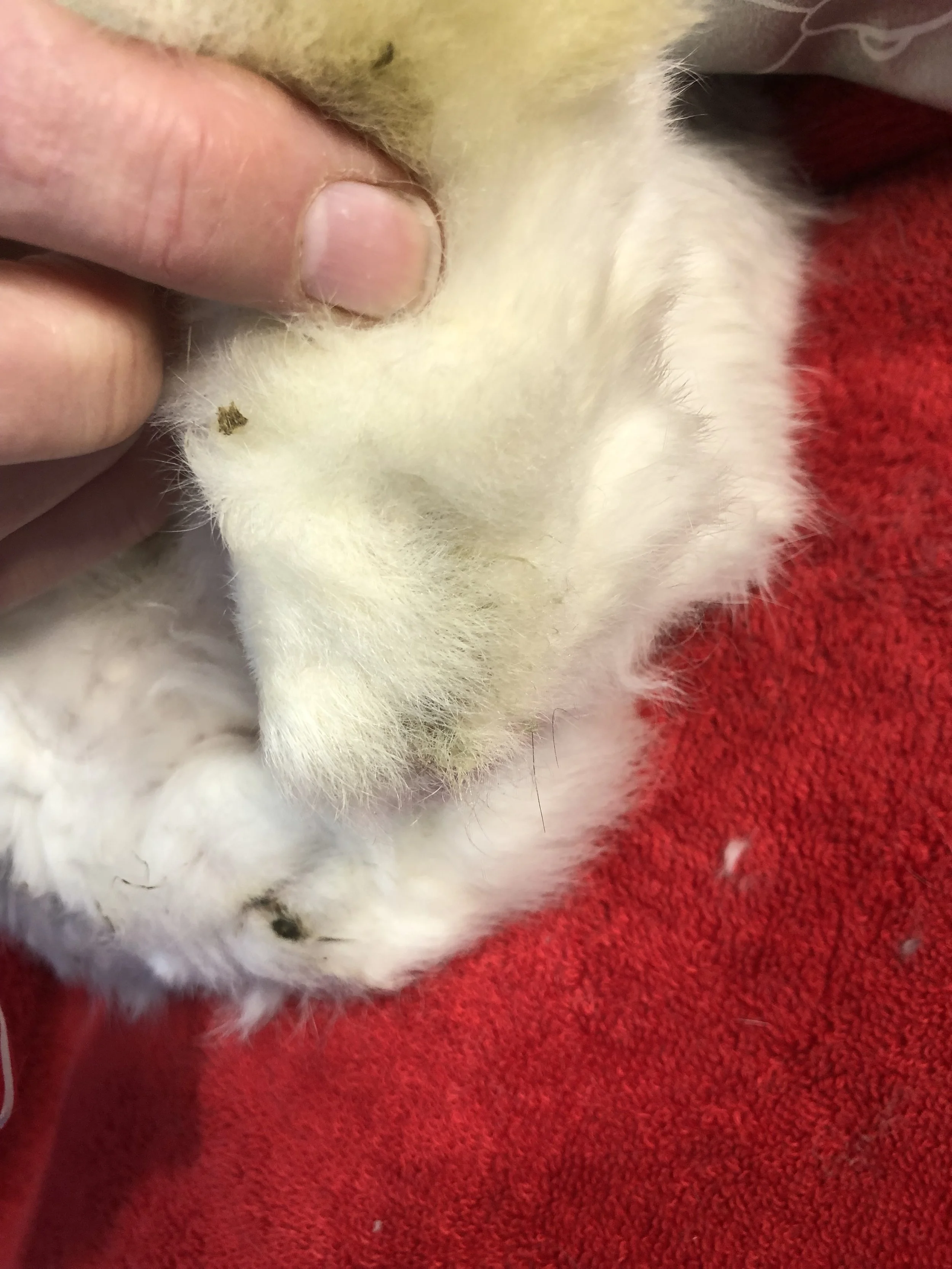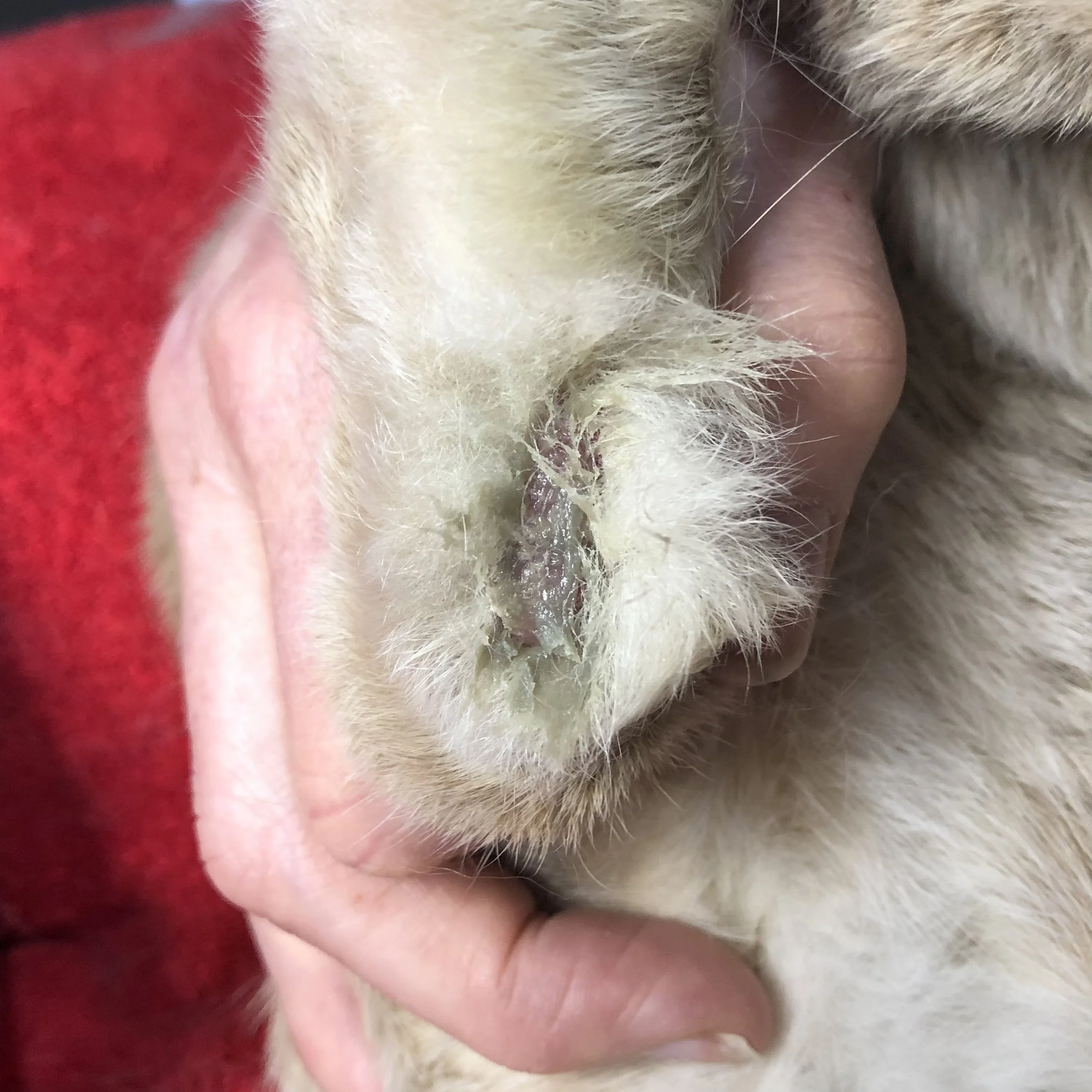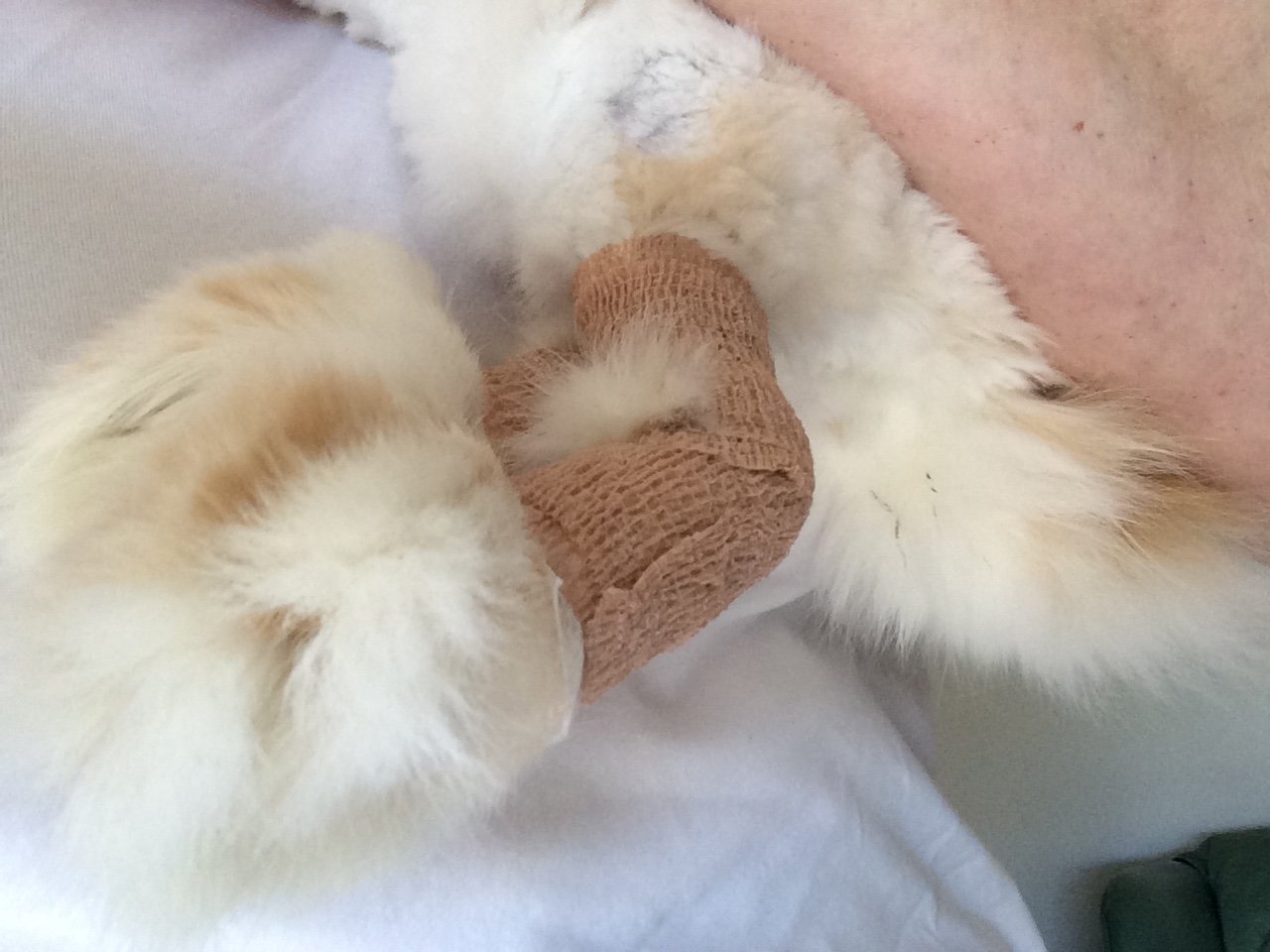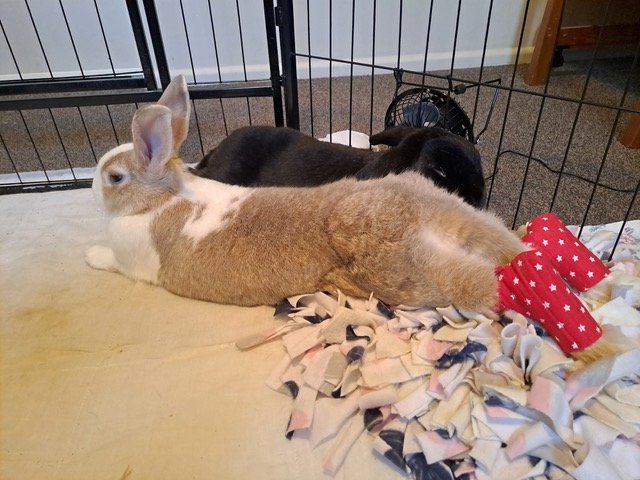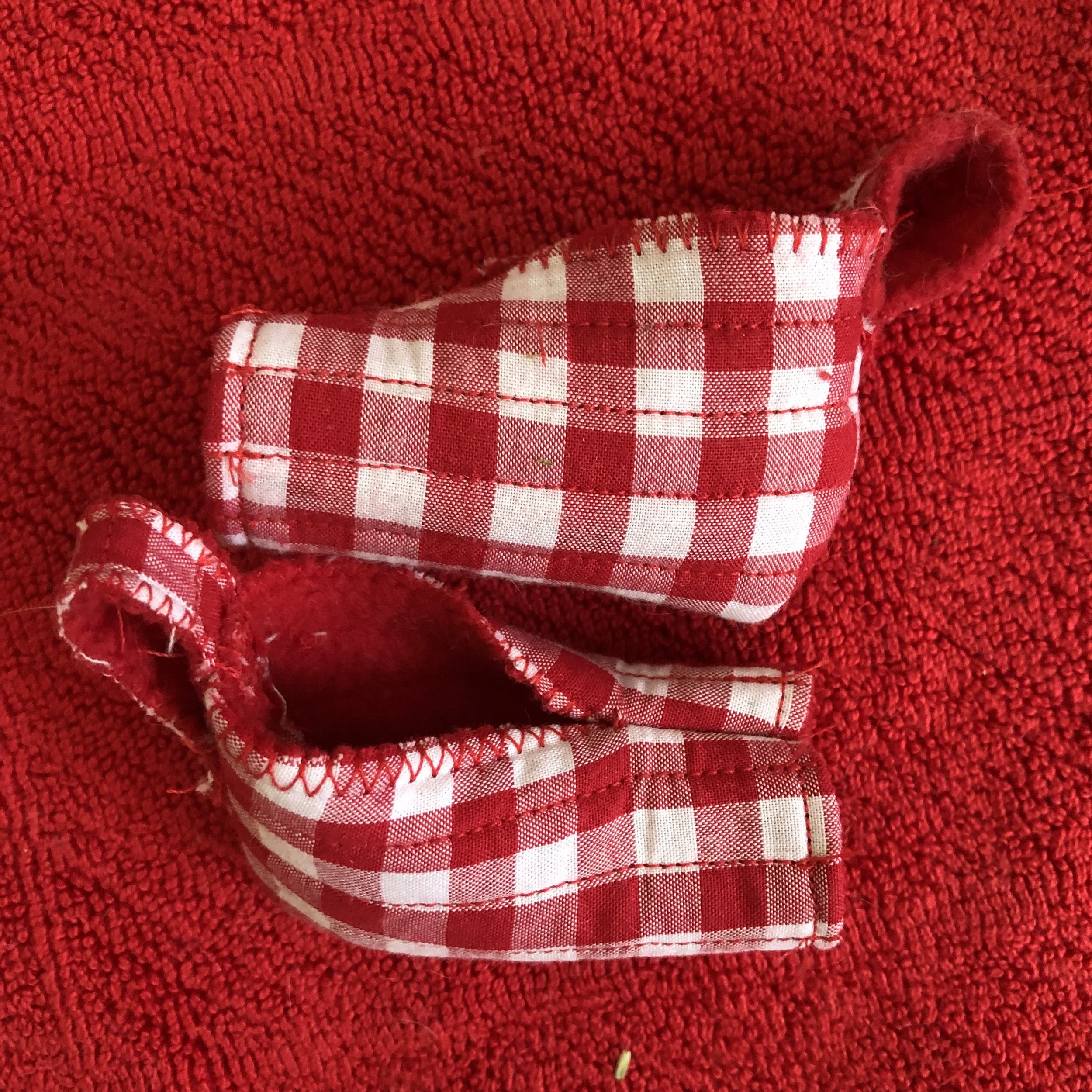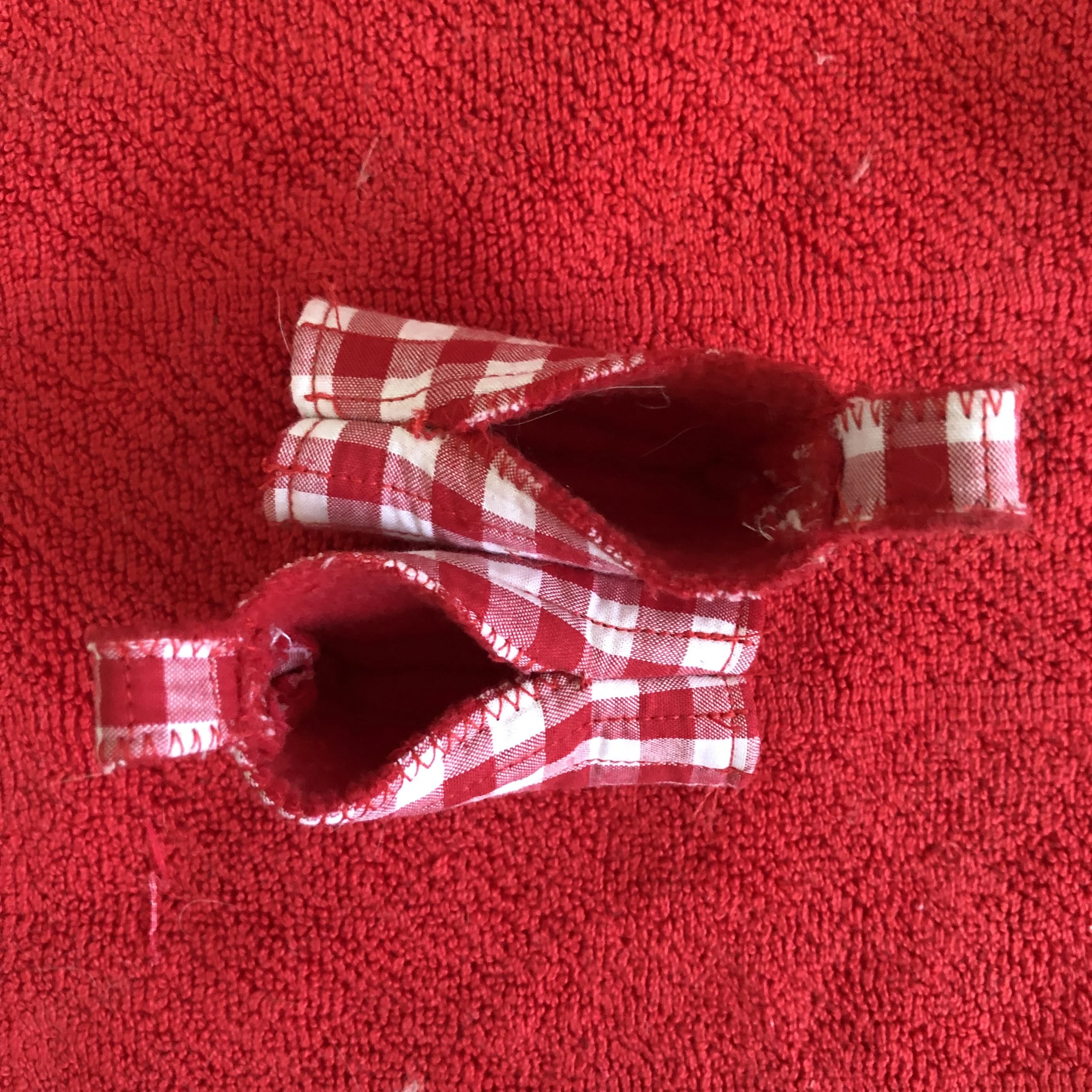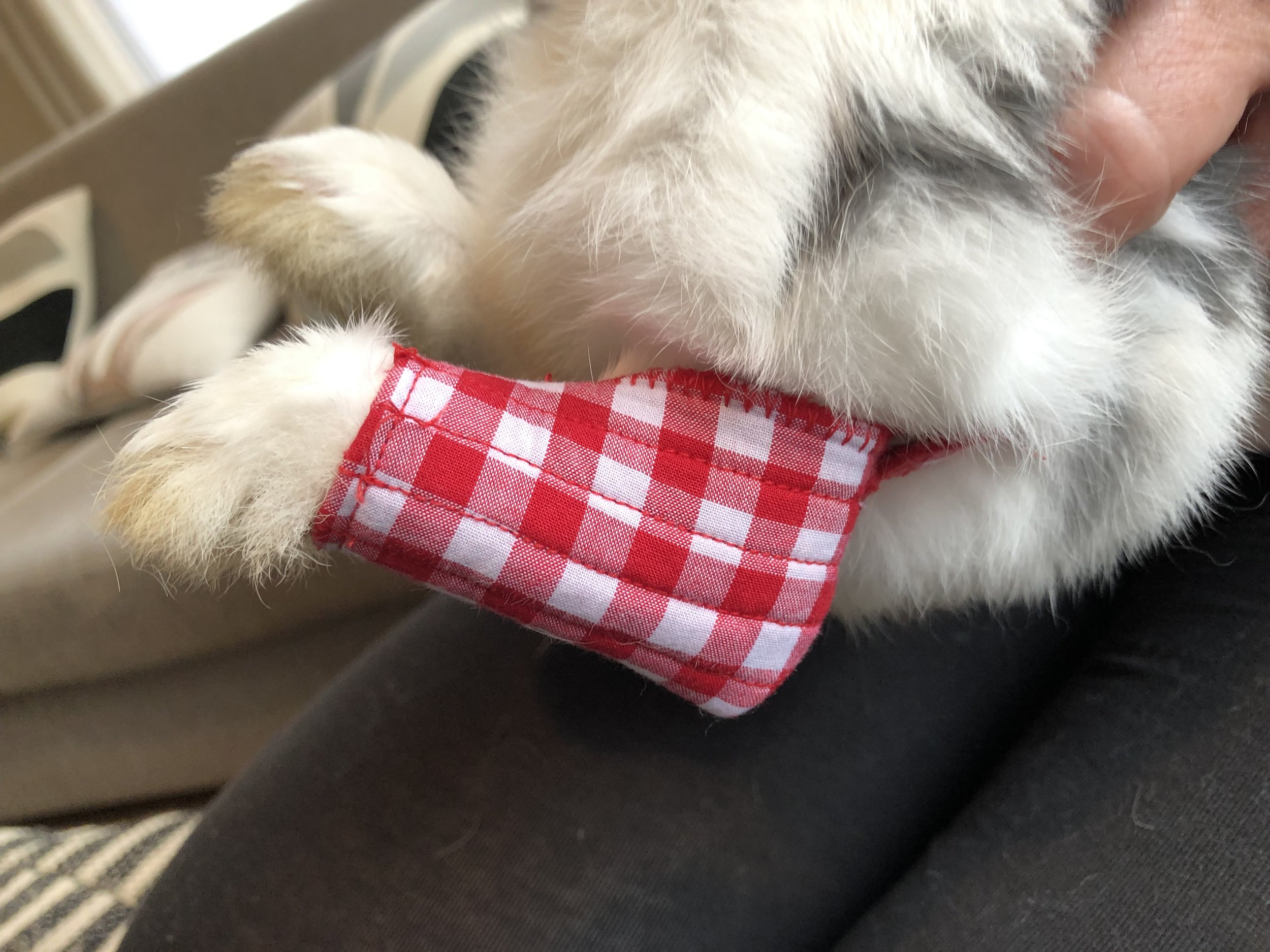Sore Hocks / Ulcerative Pododermatitis
Have you ever noticed a pink spot on the soles of your rabbits feet - especially at the hock or heel area? Pododermatitis, often called sore hocks, is a very common condition that affects rabbits and according to data collected in a study (Mancinelli et al, 2014) a staggering 93.8% prevalence of pododermatits was found in a sampled pet rabbit population in the UK. Results of this study were striking because, of the 179 rabbits surveyed, only 11 showed no signs of pododermatitis, with the remaining 168 rabbits presenting with varying degrees of lesions. Further to this, the study found that younger rabbits are at lower risk which is consistent with the theory that pressure-related ulcers are the product of compression over a period of time (Kosiak, 1961)
This is a scale which explains how to identify the severity of the Pododermatits.
It often starts off as a small pink spot and can progress to painful ulcers, infection and loss of function, as in the second picture.
It can be very difficult to treat once the disease is severe.
Why does it happen?
- Poor hygiene and damp bedding
- Susceptible Breeds - Rex coats have less fur to protect the hock
- Long nails which throw too much weight onto the heel
- Obesity which increases the pressure on the foot
- Immobility/disability which reduces the use of the toes for weight support, putting more pressure on the hock
- Unsuitable and abrasive flooring, such as hard floors, wire, artificial grass, concrete and carpet can cause wear on the hocks. This is very common with indoor rabbits.
- Large breeds which carry more weight on their hocks
- Poor physical conformation; cow hocked etc.
This video gives a good overview of sore hocks.
If advanced, lesions can develop especially if the rabbit lives on hard flat surfaces (such as wooden floors). Rex rabbits are also predisposed due to their short fur and lack of guard hairs. One recent study in the UK showed that it is also more common in older rabbits, in females, and most indoor rabbits will have at least the little pink spot.
The pink spot is fine - but how do you stop it progressing?
Check your rabbit’s feet regularly, keep their nails trimmed and ensure that they are a healthy weight. Don't remove fur from the feet, even if matted - get your vet to check it first. You can also read more about how to address matted feet here. And remember, if you have any concerns book your rabbit in to see your local rabbit savvy vet!
If you notice a sore hock on your rabbit, start treatment; consulting your veterinarian if necessary, as early as possible.
They can be difficult to treat, but are treatable- especially if caught early.
Treating Sore Hocks
The first step in treating sore hocks is to correct any management and environment-related problems that could be contributing. This is critical and can be done by you as soon as any inflammation is noticed. Make sure your rabbit's bedding and their flooring is dry, soft and clean to keep the existing sores from getting worse.
Because sore hocks can present in varying degrees of severity, treatment depends on what stage of development the sore is in.
An adult Rex with advancing sore hocks cause by poor husbandry/housing
Image credit - Keryl Hopkins (bun’s rescuer)
In the Beginning sore hocks often begin as a clear area of fur on the hock with hardened pink skin in the centre. At this stage, treatment is sometimes not yet necessary. Make changes to your rabbit's enclosure and bedding to make things more padded, and keep an eye on the hock for any signs of worsening. In addition to changing the flooring, application of WW’s Bunny Balms and/or Liquid Bandage may help prevent the problem getting worse at this stage.
As a sore hock advances, you may notice reddening or inflamed skin and callousing of the hock. The key at this stage is to reduce the inflammation while keeping the hock as dry as possible. Applying a topical anti-inflammatory product can help to reduce inflammation. You need to ensure that the product you use is safe if ingested. For this reason we don’t recommend Sudocream due to its high Zinc content unless the foot is covered with a bandage or Hockassin. WW’s Bunny Balms or Flamazine (for short term use) are both good, safe options. Some swear by Liquid Bandage, others report it hasn't helped their rabbit.
Here’s some more information about WW’s products:
Liquid Bandage; This is a liquid paint on bandage. Apply a thin layer and hold your rabbit until the product is dried. It can be applied every few days as needed. You can also use this after applying Flamazine or Bunny Balms.
Bunny Balms; These natural products are especially formulated to help heal and protect vulnerable rabbit skin. Useful for sore hocks, urine/rain scald and minor wounds. A thin layer can be used under Liquid Bandage. Supa Salve is best for this. Green Goo can be applied in a thicker layer, with any fur patted down over the top and either a wrap of Hockassins popped on to keep it on the skin for as long as possible.
These products are available via WW's shop (ships within NZ only). If needed you can pop a Hockassin on or bandage the hock with vet wrap/cohesive bandage using shed rabbit fur as a cushion to relieve pressure.
If a sore hock is left untreated, or if it does not respond to treatment attempts, it may worsen further. The redness may darken and/or increase and the area may begin to look swollen and puffy. An open pressure sore or ulcer may then develop. Persistent treatment is critical at this stage because untreated, open sores can become infected and potentially lead to further health issues. Take your rabbit to a rabbit savvy veterinarian for treatment (this is especially important if you notice any pus or leakage from the sore). Your veterinarian will likely prescribe an antibiotic and pain medication as needed. Treatment will typically include washing the hock with an antiseptic such as betadine, dressing the wound with an antibiotic product and protecting it with a Hockassins or wrapping the hock.
How to Prevent Sore Hocks
"An ounce of prevention is worth a pound of cure," and this has never been more true than in the case of sore hocks. If sore hocks are allowed to worsen and pressure sores develop, they are very difficult to treat and recurrence is common. Normally, the prevention for sore hocks is to provide a rabbit with a clean, soft and overall hygienic lifestyle but this can be challenging.
Here are some ways to prevent sore hocks:
* Check your rabbit's feet and hocks often for signs of inflammation. If you notice any symptoms, begin treating immediately. If you just notice minor redness, try applyingLiquid Bandage, WW Bunny Balms, Flamazine etc to help relieve the skin.
* If you see signs of inflammation or a developing sore, try using Hockassins or padding with a cohesive bandage wrap to protect your rabbit's foot. This will help protect it from pressure, scraping, wetness and, if you are applying cream, licking.
* Change their flooring - Do everything you can to evenly distribute pressure on your rabbit’s hock while s/he is resting on their bedding. For indoor rabbits this may mean adjusting their bedding to something softer and more pliable - a bedding that adjusts to support your rabbit just like an orthopaedic mattress does for humans. Try adding an 'egg-crate' foam, memory foam or compressed foam mats underneath their bedding to vary the bedding surface and limit pressure. Memory foam bath mats can work well too. Jute or thick cotton mats, multiple layers of polar fleece and layer of soft cotton sheets can help as well.
For large ares of hard flooring you can use large memory foam area rugs. It pays to shop around as prices vary a lot. Search via Google for the following - Muscle Mats, Relax Mats, Memory Foam Rug, Memory Foam Area Rug etc.
* Clip your rabbit's nails regularly. Short nails will assist in distributing weight more evenly on the base of the foot. Longer nails cause the rabbit to shift more weight to the back of the paw, stressing that area, and increasing the potential to form sores.
* Keep your outdoor rabbit’s enclosure as clean and as dry as possible. Buy extra bedding so that you can switch it out as it gets wet. Use more absorbable bedding and bedding that wicks moisture away from the surface. Outside - especially to cover concrete, use the compressed foam ‘jigsaw’ mats for a softer surface and/or add cotton sheets or a thick layer of Barley straw if possible. The compressed foam mats can become very hot in the sun so this will need to be considered. If the area is weather proof then jute and cotton mats can also be used.
* Keep your rabbit as clean and as dry as possible, especially in the hock area. Increase your cleaning frequency and effectiveness.
* Note - Artificial grass can become very hot in the sun and is just as abrasive as carpet and concrete and may not be a good option for a rabbit that is prone to sore hocks.
Some Topical Remedies to Try -
* Epsom Salts as a foot soak
* Flamizine - available from a pharmacy
* Liquid Bandage; available from Westley's World
* Bunny Balms available from Westley’s World
IF THERE ARE OPEN SORES ON YOUR RABBIT'S FEET, DO NOT WRAP THEM AS SHOWN BELOW UNTIL YOU HAVE HAD THE SORES EXAMINED AND PROPERLY TREATED BY AN EXPERIENCED RABBIT VETERINARIAN. OPEN SORES MAY NEED TO BE TREATED, AND THE FEET RE-WRAPPED, DAILY. WRAPPING AN OPEN SORE WITHOUT TREATING IT APPROPRIATELY CAN RESULT IN SERIOUS INFECTION.
Physical Covers
There are a few options that you can try -
The following diagrams show how you can safely wrap your rabbit's feet in special "booties" that will protect the bare areas of their feet to prevent sore hocks, if they are showing signs of fur loss on the soles. This is the technique used in the photo (Westley) above.
Option 1
Do not attempt this wrapping procedure without the guidance of a good rabbit vet who can check on the rabbit's progress and change the wrapping and medication as necessary!
Step One.
Obtain a generous wad of "spare" rabbit fur from a healthy rabbit who has been shedding. (A fine-toothed flea comb can be useful for allowing you to gently harvest the extra fur.) Roll it between your palms until it forms a soft, spongy, but firm mat of "felt" that's about 2" x 2" x 1" (deep). Other types of padding are NOT recommended, as they tend to compress into hard mats that may do more harm than good. Please DO NOT TRY THIS until you are able to get some shed rabbit wool! Cotton, gauze, or any other padding just do NOT work as well as The Real Thing.
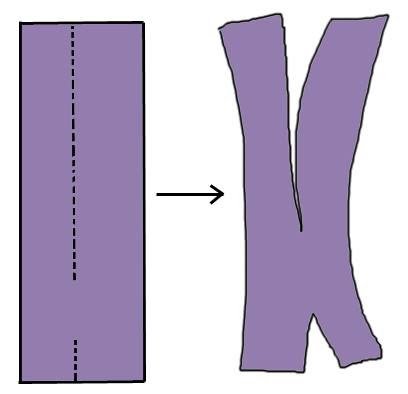
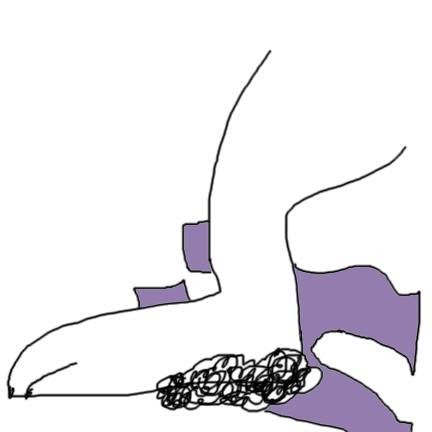
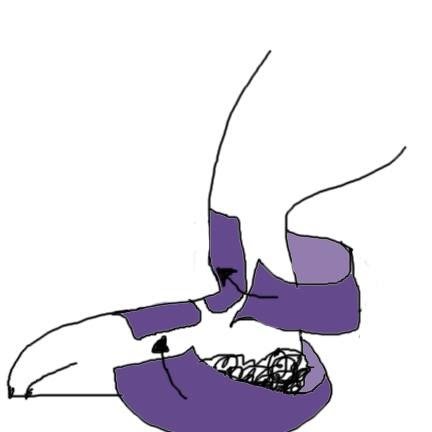
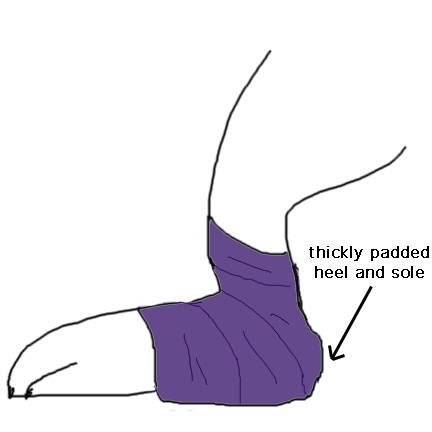

Step Seven.
Be sure to check the foot carefully several times over the next few hours to make sure there's no swelling or redness. If there is, you've wrapped it too tightly! Unwrap it immediately, let the foot "rest" for a while, and then try again.
Conversely, if wrapped too loosely, the bandage could spin around or slide up the leg and bunch up against the ankle or knee. Practice and careful observation of what works will lead to a "bootie" with the proper tension.
This style of wrapping rabbit feet with bare spots (NOT open sores) should keep the rabbit comfortable for a good while, but we generally re-wrap and re-pad every week or so. If the pad or bandage becomes wet or soiled, change it immediately, as you don't want an already compromised foot soaking in water (or worse!).
Eventually, you should see a return of normal fur growth. While your vet is treating the problem that caused the sore hocks in the first place, there's no need to leave those cute feet unprotected. GOOD LUCK!
Source: Treating Sore Hocks in Your Companion Rabbit - by Dana Krempels, Ph.D.
Option 2
Another wrap method
Source - Bandaging a rabbit posterior (hind) limb - Medirabbit
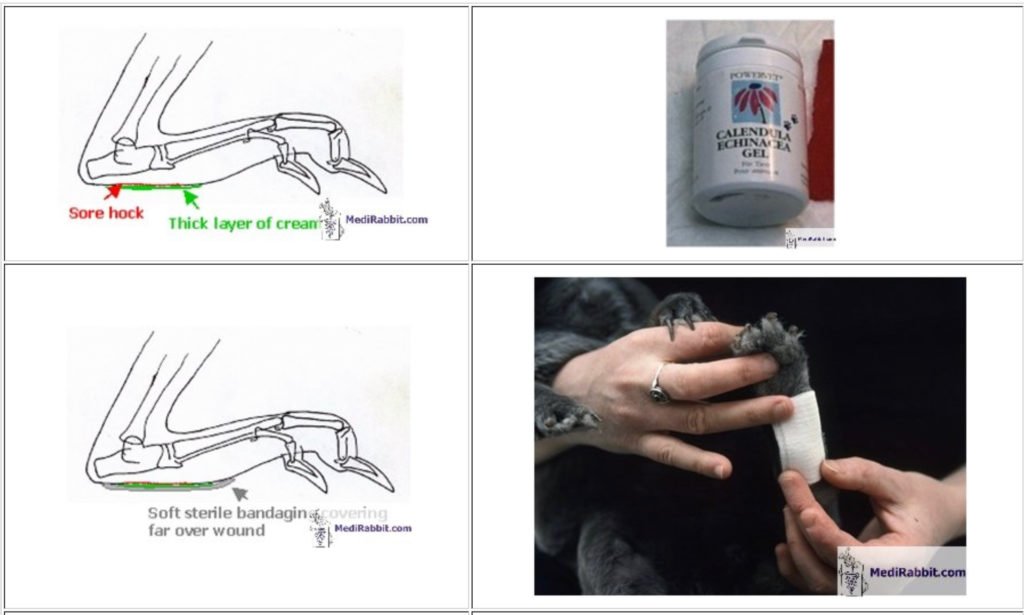
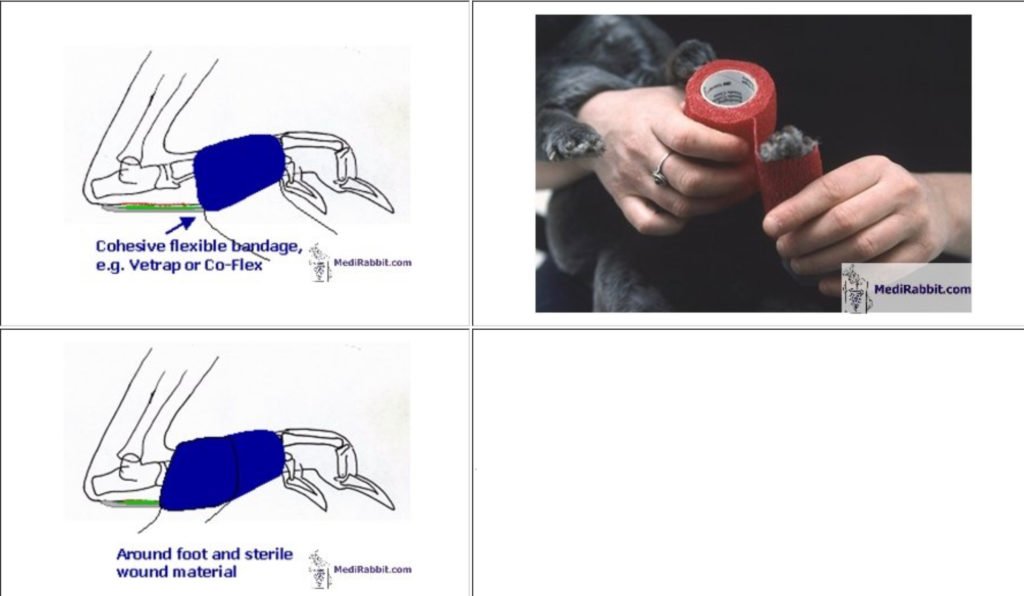
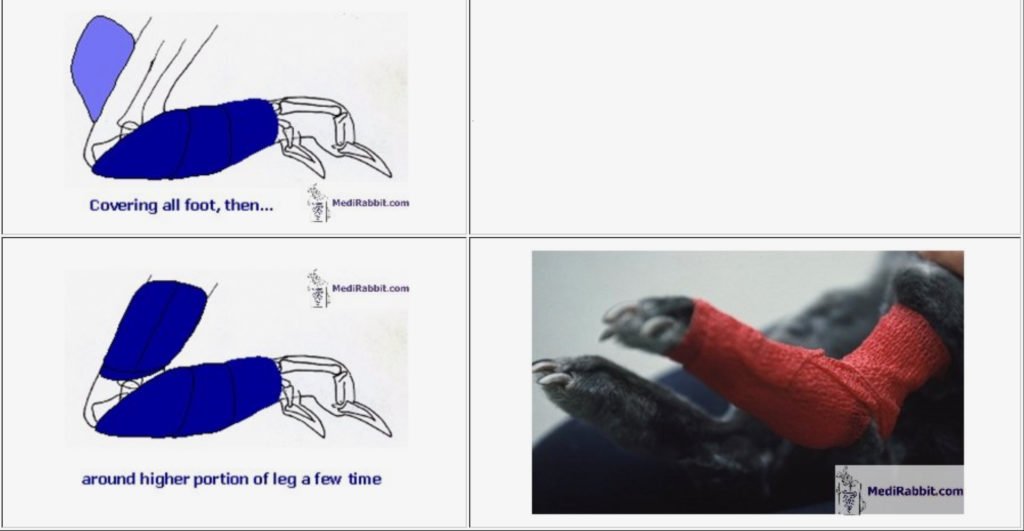
Option 3
Westley’s World Hockassins - These can be ordered here (NZ only)
Here is gorgeous Elderbun Lopsy showing off in his Hockassins.
Outside of New Zealand Rabbit Socks can be purchased from Esther van Praag of Medirabbit
Protective rabbit socks for pododermatitis or paw wounds
Further Reading:
Pododermatitis, often called “sore hocks”, is a chronic, granulomatous, ulcerative dermatitis, which most commonly affects the plantar aspect of the caudal metatarsal and tarsal areas of rabbits.
Pododermatitis in rabbits: an under-recognised problem - Author : Elisabetta Mancinelli in Vet Times
Disruption of the normal stance or locomotion in rabbits may lead to pressure sores on the base of the feet, known as pododermatitis. Starting as a skin problem, this condition progresses over time to affect deeper tissues and can be extremely debilitating.
Pododermatitis - Owner Fact Sheet - Vetlexicon
Pododermatitis is a skin disease and a musculoskeletal problem, whose origin is multifactorial. Adult rabbits are more often affected than young rabbits, larger breeds more than smaller. The major cause is trauma, due to the pressure on the sole caused by running on rough and/or abrading floors (e.g. rough carpets, tiles, vinyl or wire flooring of cages), more rarely by regular thumping of anxious or nervous rabbits. Poor hygiene in the cage can be a further cause for pododermatitis.
Sore hocks (pododermatitis) in rabbits - Medirabbit
Ulcerative pododermatitis, or bumblefoot, is a bacterial infection of the skin; specifically, the skin of the back feet and hocks -- the part of the back leg that rests on the ground when a rabbit sits. Because of the location and characteristic symptoms, this condition is also referred to as “sore hocks.”
Ulcerative Pododermatitis in Rabbits - PetMD
All About Sore Hocks - House Rabbit Network
This article mentions the use of ‘New-Skin’ (WW’s equivalent is ‘Liquid Bandage’) which has proven to be a highly effective treatment for sore hocks in some cases. It provides extra cushion to protects the skin of the hock and the inflamed area, allowing it to heal. Just place some on the affected area and hold your bunny until it dries. Each treatment will last several days.

